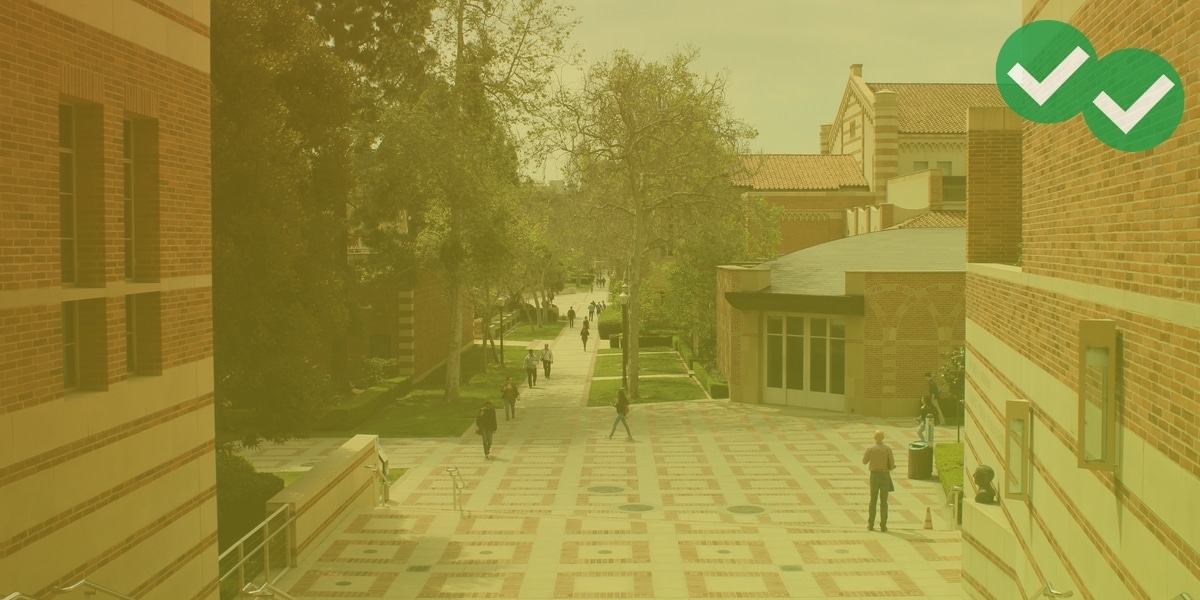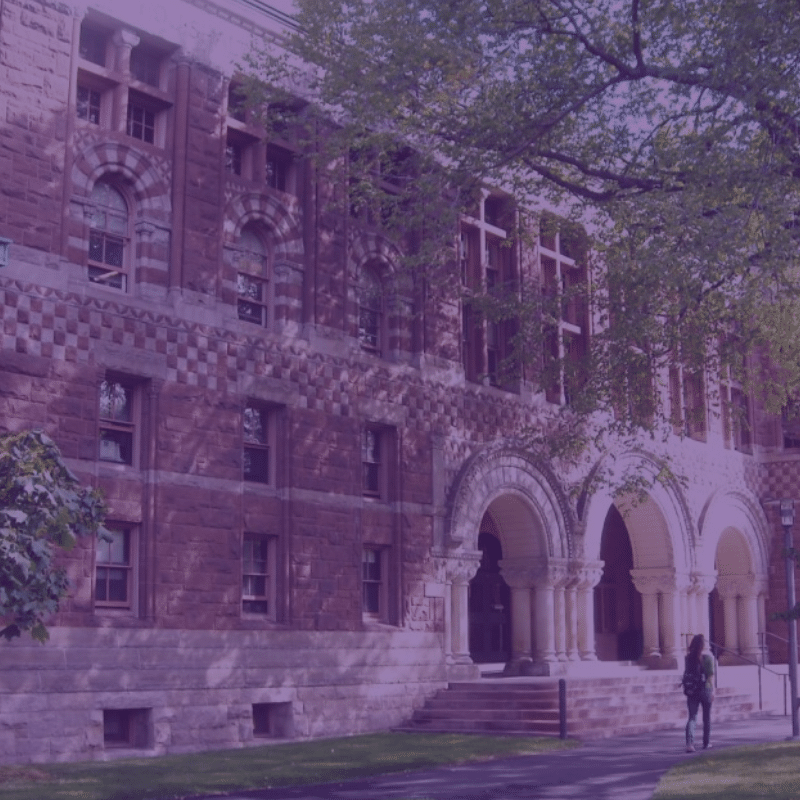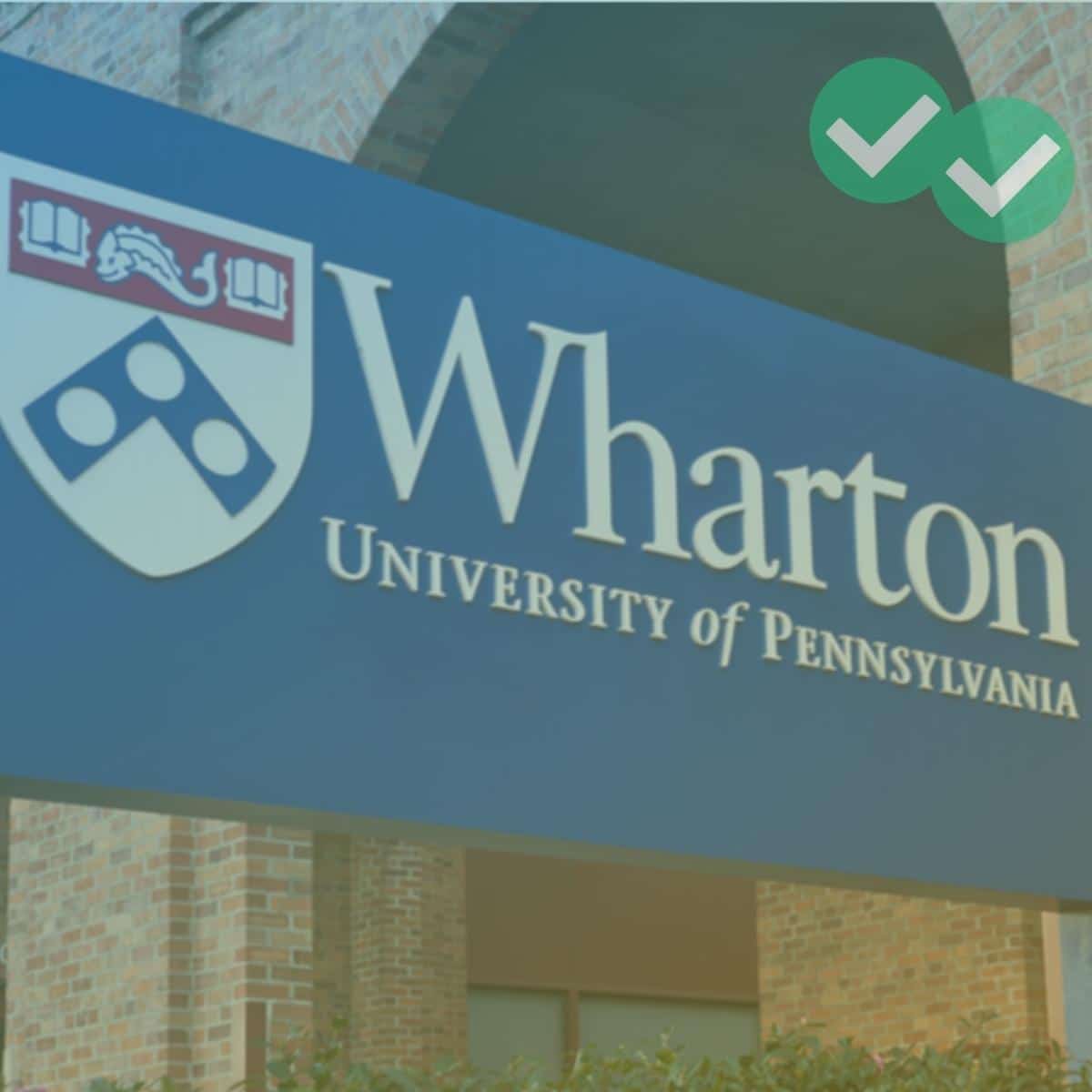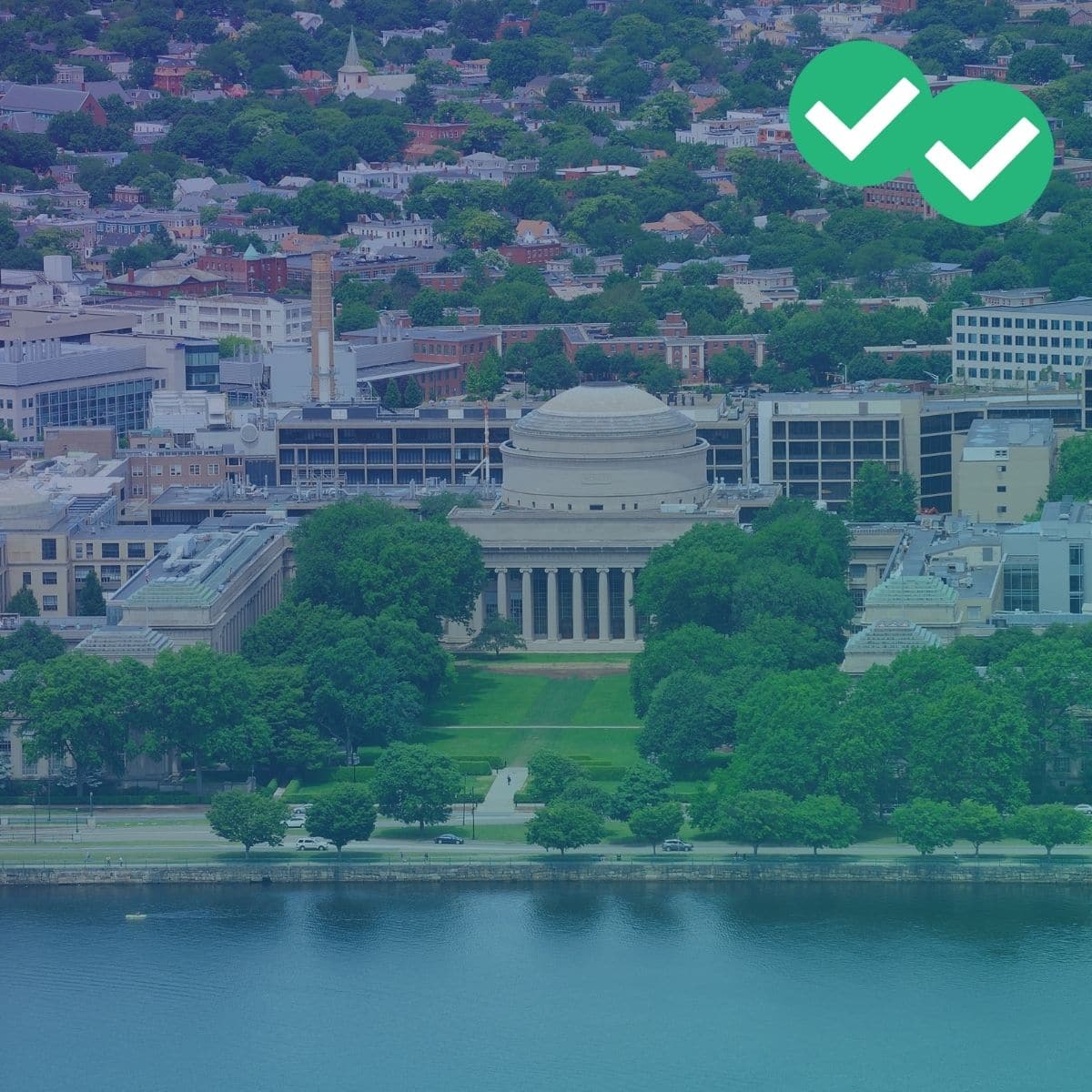Los Angeles is a truly iconic American city! But there’s far more to L.A. than its beaches, glamorous downtown, or the Hollywood sign. L.A. is also known for world-class education, and the UCLA MBA you can get there is no exception. But is the UCLA Anderson School of Business right for you, or is it better to pursue admissions at one of Magoosh’s other top 25 MBA programs? Read on to learn more.
UCLA Anderson: MBA Class Profile (Class of 2023)
Overview
| Category | Admissions Data |
|---|---|
| Class Size | 360 |
| Acceptance Rate | 34.4% |
| GMAT scores | 714 (average) 670-750 (middle 80%) |
| GPA | 3.5 (average) 3.1-3.8 (middle 80%) |
| Female | 42% |
| Minorities | 32% |
| International Students | 32% |
| Average Work Experience | 5 years |
(Sources: UCLA Anderson, US News and World Report)
Suffice to say, Anderson students are an academically robust cohort. So you’ll want a decent GPA in order to get in, and you’ll also want to master all things GMAT. At the same time, the acceptance rate is relatively high for such an elite business school. So is UCLA MBA hard to get into? The answer is still yes– a ~34% chance of getting in may be relatively high, but is still low if you simply think of it from a “raw numbers” perspective.
UCLA MBA Students: Academic Background
But who are the students behind the numbers, and where do they come from?
Well, for one thing, they come from a variety of academic disciplines. As you might expect, undergraduate business majors represent the largest group… but perhaps not as large a group as you’d expect. Only 26% of the UCLA MBA class of 2023 have bachelor’s degrees in business. Still, another 20% did study the closely related field of economics as undergrads. An equal number of students– another 20%– have a scholarly background in engineering. From there, humanities is a close runner-up, as the prior field of study for 17% of UCLA Anderson’s class of 2023. Moving on, we have math and science at 10%, and all other majors at 7%.
Professional Backgrounds for Students at Anderson
Now that you know the demographics and academic interests of your potential future classmates, let’s take a look at their work history. If you go to UCLA Anderson, what kind of professionals will you study alongside? The table below breaks it all down for you.
| Industry Background of UCLA MBA Students | Percentage of Student Body |
|---|---|
| Tech | 22% |
| Finance | 21% |
| Consulting | 21% |
| Consumer Goods | 10% |
| Public/Nonprofit | 9% |
| Healthcare/Biotech | 8% |
| Entertainment/Media | 5% |
| Real Estate | 4% |
UCLA MBA Ranking
So far, we’ve looked at the grades, test scores, and work history of the UCLA MBA candidates. And while that does look impressive, perhaps the best way to understand how competitive Anderson students are is to look at how competitive the program itself is. Where does UCLA Anderson rank?
Multiple sources place the UCLA Anderson School within the top 20 U.S. programs. US News and World Report, for instance, ranks it at number 18 in the nation, while Forbes places the UCLA MBA at number 16 nationwide.
How to Get Into the UCLA Anderson School of Management

The UCLA Anderson School accepts applications in three rounds throughout the year. Exact dates vary year to year, but the Round 1 deadline is typically in early October, Round 2 in early January, and Round 3 in mid-April.
MBA UCLA applicants must fulfill the following requirements:
- Full transcript from a 4-year Bachelor’s program (3-year programs are acceptable in some instances)
- Valid score report for the GMAT or GRE
- Resume detailing their work experience
- UCLA Anderson strongly encourages one page, with two pages as the maximum.
- Two letters of recommendation (preferably from a manager or direct supervisor)
- A 250 word (maximum) essay, with the option to submit a second optional essay of the same length
- A ~30-minute scheduled interview via Zoom
- This interview is only required of students who receive an interview invitation; typically this happens when UCLA Anderson has already approved a students’ initial application materials.
- International students must submit TOEFL/IELTS scores if English is their second language (see UCLA’s English Proficiency Requirements for more info)
If you’re ready to learn even more about these requirements so that you can dive into the application process, check out UCLA Anderson’s Application Requirements page.
Also note that these application requirements are specifically for the full-time UCLA MBA. If you’re more interested in the part-time MBA for fully employed students (FEMBA) or the executive MBA (EMBA), the links on the main application web page for UCLA Anderson can point you in the right direction.
Speaking of those options, students sometimes ask me “How long is UCLA MBA?” The standard full-time program, which I’m focusing on in this article, generally takes two years. But times can vary for the FEMBA and EMBA, as you’ll see if you check out those program links.
UCLA MBA Curriculum
At the core of UCLA Anderson’s academics are nine business fundamentals courses.
While you can go for a general business degree built around these fundamentals, there are many specialization options. UCLA Anderson offers 15 different possible specializations, in fields as diverse as accounting, entertainment, sustainability, real estate, and more.
The master’s thesis itself is experiential-based hands-on work. Students have the option of doing this work as an employee or as an entrepreneur who’s starting their own business. For students going the employee route, the UCLA MBA program facilitates internships and placements.
Why choose UCLA Anderson’s MBA program?
I opened up this article with a rather shallow reason to choose UCLA Anderson: Los Angeles is a fun and exciting place! But being picky about where you’ll live for two or more years can be important! Admittedly, that’s subjective decision, along with whether or not you’d “fit in” with your classmates based on the student profile, even though there are more concrete numbers involved.
Of course, the academics are a little more concrete. You can look at the classes I talked about and get an idea of what they’d teach you. Do you need to learn these things? Answering that question for yourself will help you decide if you want to go for a UCLA MBA. Of course, even that is at least somewhat a matter of personal preference.
So let’s talk about the most real-world dimension of your decision: your return on investment. The first thing you should figure out is what the investment itself will be. How much does a UCLA MBA cost? The total tuition for the program is currently a little over $65,000 dollars. But Anderson places the total cost at a little over $100k with the cost of living and other additional costs factored in. You can see their full breakdown on this UCLA Anderson profile.
So what’s the return? That depends on where you work and what you get paid once you’ve finished school. Yes, I’m talking about employment outcomes: the kind of job you’ll get after graduation, and what that job might pay.
UCLA Anderson’s Employment Outcomes
Return on investment is the most important decision you can possibly make. The Anderson School of Management understands this, and they’re transparent about employment outcomes in a way that I find both impressive and admirable. The publicly available Anderson report on employment outcomes (PDF) should be required reading for all prospective UCLA MBA students. But below, I’ll also give you some important highlights from that document.
Rate of Employment and Average Pay
First, let’s talk about job placement. 69.3% of UCLA MBA graduates receive a job offer by the time they graduate, and 63.7% accept that job. These stats are admittedly not great, as it means that about a third of graduates don’t initially get a job offer or a job. By three months after graduation, however, the numbers start looking a lot better. At that point, 83.3% of graduates have gotten a job offer, and 78.3% have accepted.
The average salary for a UCLA Anderson School of Business graduate is $132,460. Now, if you already live in Los Angeles or a similarly expensive city, that might not sound like much. But it’s important to remember that UCLA graduates’ salaries vary a lot by region. Regional differences are listed in stunning detail in Anderson’s employment outcomes report; so are differences in pay by industry.
Sign-on bonuses for recently Anderson MBA graduates also vary a good deal. the range for that beginning of employment perk is between $4,000 and $80,000, with an average payout of around 31k. (Again, tons of details on these variations are found in the UCLA MBA program’s own report.)
The Career Paths of Anderson Graduates
Now, I see employment outcomes as a two-piece puzzle: what you get paid, and what you’ll be doing. To put in the second puzzle piece, I’ve created a table of the industries that UCLA Anderson grads find themselves in.
| Industries UCLA MBA Graduates Work In | Percentage of Graduates |
|---|---|
| Technology | 31.8% |
| Consulting Services | 25.4% |
| Financial Services | 14.4% |
| Real Estate | 6.4% |
| Consumer Products | 6.4% |
| Entertainment/Media | 5.5% |
| Healthcare | 4.7% |
| Education/Nonprofit | 2.1% |
| Other | 2.1% |
| Energy/Utilities | 1.3% |
So is UCLA good for MBA studies? Ultimately, UCLA Anderson gives you a lot of employment information that can help you make your final decision. They also provide information on internship placement before long-term employment, the specific roles UCLA MBA grads take on in their industries, a list of the companies that hire them, and so on! So be sure to check out the employment outcomes brochure for the program. (I know I keep repeatedly linking it, but it’s great!!!) And take a look at Anderson’s Career Impact website as well.






Leave a Reply